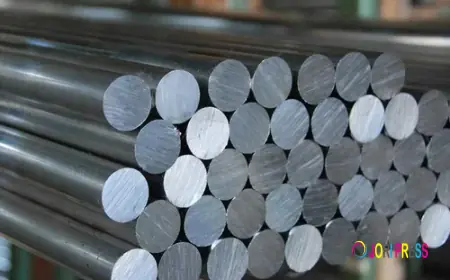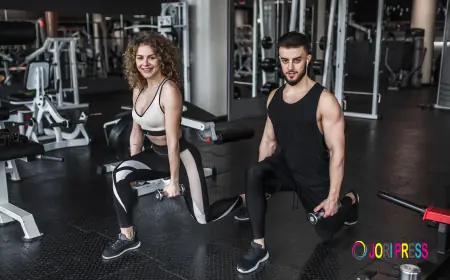Riyadh: Gynecomastia Surgery for Puffiness?
For those seeking solutions in Riyadh, understanding how Gynecomastia Surgery in Riyadh addresses this specific type of chest concern is crucial for achieving a more masculine and confident physique.

For many men, the appearance of their chest can be a significant source of self-consciousness. While severe enlargement of breast tissue is a clear indicator of gynecomastia, a more subtle yet equally distressing concern is "puffy nipples" or a generally less defined, soft chest area. This puffiness, even without significant overall breast size, can make men feel uncomfortable going shirtless, wearing fitted clothing, or engaging in activities like swimming. For those seeking solutions in Riyadh, understanding how Gynecomastia Surgery in Riyadh (جراحة التثدي في الرياض) addresses this specific type of chest concern is crucial for achieving a more masculine and confident physique.
What is "Puffy Nipple" Syndrome?
"Puffy nipple" syndrome refers to a mild form of gynecomastia or pseudogynecomastia where the nipple-areola complex appears protruded, swollen, or puffy, often giving the impression of a small, soft mound under the shirt. This can be due to a combination of factors:
-
Residual Glandular Tissue: Even small amounts of glandular tissue under the nipple can cause projection.
-
Localized Fat Deposits: Excess fat concentrated directly behind the nipple or in the immediate sub-areolar area.
-
Skin Laxity: Looseness of the skin around the areola or nipple that contributes to a less firm appearance.
-
Nipple Protrusion: The nipple itself may be more prominent than desired, appearing to "stick out."
This subtle puffiness, though less dramatic than full-blown gynecomastia, can be just as impactful on a man's confidence and body image.
Why Traditional Methods Fall Short
Diet and exercise, while vital for overall health and fat reduction, often fail to adequately address puffy nipples. Glandular tissue is resistant to exercise, and highly localized fat deposits can be notoriously stubborn. Skin laxity, especially around the nipple, also cannot be corrected through non-surgical means. This is why surgical intervention becomes a necessary and effective solution for many.
The Role of Gynecomastia Surgery in Riyadh, Jeddah and Saudi Arabia in Treating Puffiness
Gynecomastia Surgery in Riyadh, Jeddah and Saudi Arabia is not a one-size-fits-all procedure; it is tailored to the individual's specific needs and the underlying cause of their chest concerns. When dealing with "puffiness," the surgical approach focuses on precise removal of the offending tissue, resulting in a flatter, more contoured, and masculine chest.
Precision Excision of Glandular Tissue
For cases where glandular tissue is the primary cause of puffiness, surgical excision is paramount.
-
Targeted Removal: The surgeon makes a small incision, often along the edge of the areola (periareolar incision), which allows for discreet scarring. Through this incision, the excess glandular tissue located directly beneath the nipple and areola is meticulously removed.
-
Sub-Areolar Focus: The focus is on the sub-areolar area, which is typically the most prominent point of puffiness. Careful sculpting ensures a smooth transition to the surrounding chest wall.
-
Preventing Concavity: An experienced surgeon will ensure enough tissue is left to prevent a "caved-in" or overly hollow appearance, maintaining a natural chest contour.
Strategic Liposuction for Localized Fat
When localized fatty deposits contribute to the puffiness, liposuction plays a crucial role.
-
Fat Reduction and Contouring: Small cannulas are inserted through tiny incisions (often the same periareolar incision used for glandular excision, or very small separate ones) to suction out excess fat from the immediate sub-areolar region and surrounding chest area.
-
Blending and Smoothing: Liposuction helps to sculpt and feather the edges of the treated area, creating a smooth transition from the chest wall to the nipple, preventing any abrupt changes in contour. This is vital for a natural-looking result, especially when addressing puffiness.
-
Addressing Pseudogynecomastia: In cases where puffiness is solely due to fatty tissue (pseudogynecomastia), liposuction alone may be sufficient. However, for true gynecomastia with glandular tissue, it's typically combined with excision.
Addressing Skin Laxity and Nipple Protrusion
Sometimes, skin laxity or a naturally prominent nipple exacerbates the puffy appearance.
-
Skin Redraping: While not always necessary for mild puffiness, in some cases, the skin around the areola may need to be tightened or redraped to ensure it conforms smoothly to the newly contoured chest. For mild skin laxity, the skin often retracts naturally after tissue removal.
-
Nipple Reduction (if needed): If the nipple itself is unusually prominent, a very minor nipple reduction can be performed as part of the overall procedure to achieve better balance.
By combining these precise techniques, Gynecomastia Surgery in Riyadh, Jeddah and Saudi Arabia offers a tailored solution for correcting chest puffiness, leading to a flatter, firmer, and more masculine chest contour that aligns with a patient's aesthetic goals.
Benefits of Surgical Correction for Chest Puffiness
Opting for surgical correction of chest puffiness, even in its milder forms, can yield significant and lasting benefits that extend far beyond just appearance. The precision of Gynecomastia Surgery in Riyadh allows for targeted correction that non-surgical methods simply cannot achieve.
Achieving a Truly Flat and Defined Chest
The primary and most impactful benefit is the creation of a flatter, more masculine chest contour.
-
Elimination of Protrusion: Surgical removal of glandular tissue and targeted liposuction directly addresses the underlying cause of the puffiness, resulting in a smooth, flat chest that lacks the undesirable protrusion.
-
Improved Definition: By removing excess tissue and fat, the natural contours of the chest muscles can become more visible, contributing to a more athletic and defined appearance.
-
Proportionality: The chest will appear more proportionate to the rest of the body, enhancing overall body harmony.
Enhanced Confidence and Psychological Well-being
The psychological impact of correcting chest puffiness is often profound.
-
Increased Self-Esteem: For men who have felt self-conscious about their chest, achieving a flatter contour can lead to a significant boost in self-esteem and body confidence.
-
Freedom and Comfort: Patients often report feeling more comfortable going shirtless, wearing fitted clothing, or participating in activities like swimming, where they previously felt exposed or embarrassed.
-
Improved Body Image: The physical transformation helps align a man's outward appearance with his internal sense of masculinity, leading to a more positive body image.
Permanent and Lasting Results
Unlike temporary solutions, surgical correction offers a definitive and long-lasting outcome.
-
Removal of Glandular Tissue: Once glandular tissue is surgically removed, it cannot grow back. This ensures a permanent reduction in the size of the treated area.
-
Targeted Fat Reduction: Fat cells removed through liposuction do not regenerate in the treated area, contributing to the permanence of the contouring.
-
Resistance to Weight Fluctuations: While significant weight gain can lead to new fat deposits (including in the chest), the primary cause of puffiness (glandular tissue) is permanently addressed.
Minimal and Discreet Scarring
Modern surgical techniques prioritize discreet incisions.
-
Periareolar Incision: For mild to moderate puffiness, incisions are typically made along the edge of the areola (the colored area around the nipple). This placement allows the scar to blend seamlessly with the natural pigmentation and texture of the areola, making it very difficult to detect once healed.
-
Reduced Visibility: With proper care, these scars become virtually imperceptible over time, allowing patients to enjoy their new chest contour with confidence.
By directly addressing the root causes of chest puffiness, Gynecomastia Surgery in Riyadh provides a comprehensive and permanent solution, leading to both aesthetic improvements and a significant boost in a man's confidence and quality of life.
The Surgical Process: What to Expect from Consultation to Recovery
Undergoing Gynecomastia Surgery in Riyadh for puffiness, like any surgical procedure, involves a clear process from initial assessment to final results. Understanding each stage helps patients prepare and sets realistic expectations for their transformation journey.
Initial Consultation: Personalized Assessment
Your journey begins with a detailed consultation with a qualified plastic surgeon.
-
Discussion of Concerns: You will discuss your specific concerns about chest puffiness, your aesthetic goals, and your medical history. The surgeon will listen attentively to understand your motivations.
-
Physical Examination: The surgeon will perform a thorough examination of your chest, distinguishing between glandular tissue and fatty deposits, assessing skin elasticity, and evaluating nipple protrusion.
-
Customized Surgical Plan: Based on this assessment, the surgeon will recommend the most appropriate surgical technique(s) (excision, liposuction, or a combination) to address your specific type of puffiness. They will explain the procedure in detail, including incision placement and expected outcomes.
-
Realistic Expectations: The surgeon will provide a candid discussion about what can be realistically achieved, managing expectations regarding scarring, recovery, and final results.
Pre-Operative Preparation: Getting Ready for Surgery
Once you decide to proceed, you'll receive comprehensive instructions to prepare.
-
Medical Clearance: You'll undergo necessary medical tests (blood work, ECG, etc.) to ensure you are healthy and a good candidate for surgery.
-
Medication Review: You'll be advised to stop certain medications (like blood thinners, aspirin, specific supplements) that could increase bleeding risk, usually for a period before surgery.
-
Smoking Cessation: If you smoke, you will be strongly advised to quit several weeks before and after surgery, as smoking severely impairs healing and increases complication risks.
-
Logistical Planning: Arrange for a responsible adult to drive you home after the surgery and assist you during the initial recovery period (usually 24-48 hours).
The Day of Surgery: The Procedure Itself
On the day of your surgery, you will arrive at the accredited surgical facility.
-
Anesthesia: Gynecomastia surgery for puffiness is typically performed under general anesthesia, ensuring you are comfortable and asleep throughout the procedure.
-
Surgical Execution: The surgeon will make the planned incisions (most often periareolar), meticulously remove the excess glandular tissue, and perform liposuction if needed to remove localized fat and contour the chest.
-
Duration: The procedure typically takes between 1 to 2 hours, depending on the complexity and extent of the correction.
-
Closure: Incisions are carefully closed, and a compression garment will be applied to help reduce swelling and support the newly contoured chest. Drains may or may not be used, depending on the surgeon's preference and the extent of the procedure.
Post-Operative Recovery: Healing and Revealing Results
Recovery is a gradual process, but the initial discomfort typically subsides quickly.
-
Immediate Post-Op: You will experience some soreness, swelling, and bruising in the chest area. Pain medication will be prescribed to manage discomfort.
-
Compression Garment: Wearing the compression garment continuously (as directed by your surgeon) is crucial for reducing swelling, promoting skin retraction, and supporting your new contour. This is typically worn for several weeks.
-
Downtime: Most patients can return to light, non-strenuous activities or desk work within a few days to a week. Strenuous exercise, heavy lifting, and activities that put pressure on the chest should be avoided for 3-6 weeks.
-
Swelling Resolution: Initial swelling will subside significantly within the first few weeks, revealing a much flatter contour. However, subtle swelling can persist for several months.
-
Scar Maturation: Scars along the areola will be visible initially but will gradually fade and flatten over 6-12 months, becoming very discreet.
-
Final Results: While you'll see a noticeable improvement relatively quickly, the final, refined results of your Gynecomastia Surgery in Riyadh may take 3-6 months to a year as all swelling resolves and tissues fully settle.
Throughout this process, consistent follow-up appointments with your surgeon are vital to monitor your healing progress, address any concerns, and ensure you achieve the best possible outcome.
Maintaining Your Results: Long-Term Outlook for a Confident Chest
Achieving a flatter, more masculine chest through gynecomastia surgery is a significant accomplishment. While the removal of glandular tissue is permanent, maintaining the sculpted results and preserving your newfound confidence requires a commitment to a healthy lifestyle and ongoing awareness.
Lifestyle Choices for Lasting Results
Your daily habits play a crucial role in preventing any future changes to your chest contour.
-
Maintain a Stable Weight: Significant weight fluctuations, especially weight gain, can lead to the accumulation of new fatty deposits in the chest area, potentially diminishing the aesthetic result of the surgery. Aim for a healthy, stable weight through balanced nutrition and regular exercise.
-
Avoid Hormone-Altering Substances: Strictly avoid anabolic steroids, certain illicit drugs, and excessive alcohol consumption. These substances can disrupt hormonal balance and potentially stimulate any remaining fat cells or, in rare cases, trigger new glandular growth if not fully removed.
-
Balanced Diet: Focus on a nutritious diet rich in lean proteins, fruits, vegetables, and whole grains. This supports overall health and helps manage body fat.
-
Regular Exercise: Continue to engage in regular physical activity, including exercises that strengthen the chest muscles. While exercise won't affect remaining glandular tissue, it will enhance overall chest definition and physique.
Understanding Potential, Though Rare, Recurrence
While the removal of glandular tissue is permanent, it's important to understand the nuances of "recurrence."
-
True Glandular Recurrence is Rare: If all glandular tissue is meticulously removed by an experienced surgeon, true recurrence of that tissue is exceptionally rare.
-
New Fat Accumulation: The most common reason for a "return" of chest fullness after surgery is significant weight gain, leading to new fat deposits. This is pseudogynecomastia and can be addressed with further liposuction if desired.
-
Incomplete Removal (Rare): In very rare cases, if a tiny amount of glandular tissue was inadvertently left behind, it could potentially grow if a strong hormonal stimulus (like anabolic steroid use) is introduced later. This underscores the importance of choosing a highly skilled surgeon.
Ongoing Vigilance and Follow-Up
Maintaining awareness of your body and having open communication with your healthcare provider is key.
-
Self-Monitoring: Periodically check your chest for any new lumps, tenderness, or changes in contour.
-
Regular Check-ups: Maintain regular check-ups with your primary care physician to monitor overall health and hormonal balance.
-
Consult Your Surgeon: If you notice any concerning changes or have questions about your chest appearance years after surgery, schedule a follow-up with your plastic surgeon.
By embracing these long-term strategies, individuals who undergo Gynecomastia Surgery in Riyadh for puffiness can confidently enjoy their improved chest contour for years to come, secure in the knowledge that they are taking proactive steps to maintain their results.
Frequently Asked Questions
For those considering Gynecomastia Surgery in Riyadh specifically for chest puffiness, several practical questions often arise. Here are some uniquely highlighted answers to help clarify important aspects.
Many People Wonder: Is Gynecomastia Surgery for puffiness a less invasive procedure than for full breast enlargement?
Generally, yes, Gynecomastia Surgery in Riyadh performed specifically for mild puffiness tends to be less invasive than procedures for significant breast enlargement. When only glandular tissue under the nipple and localized fat are the cause, the surgeon can often achieve excellent results through smaller, discreet periareolar incisions with minimal tissue removal and liposuction. Cases of extensive enlargement may require larger incisions, more significant tissue removal, and potentially skin tightening procedures. The key difference lies in the volume of tissue to be removed and the extent of skin redraping needed, making "puffiness" correction often a more straightforward and less extensive surgery.
Is it true that: The results of Gynecomastia Surgery for puffiness are permanent?
Yes, the results of Gynecomastia Surgery in Riyadh for puffiness are generally considered permanent. This is because the procedure involves the surgical removal of the actual glandular breast tissue, which, once removed, cannot grow back. If liposuction is also performed, the fat cells removed from the treated area are also permanently gone. However, it's crucial to distinguish this from the accumulation of new fat cells due to significant weight gain after surgery. While the original problem (glandular puffiness) won't return, maintaining a stable weight and a healthy lifestyle is essential to preserve the overall contoured appearance of your chest.
Often Asked: How discreet are the scars from Gynecomastia Surgery for puffiness in Riyadh?
For correcting chest puffiness, the scars from Gynecomastia Surgery in Riyadh are typically very discreet and strategically placed to be minimally visible. The most common incision used is the periareolar incision, which is made along the edge of the areola (the darker skin around the nipple). This allows the scar to blend seamlessly with the natural transition of the areola's color and texture to the surrounding chest skin, making it very difficult to detect once it has fully healed and matured over several months to a year. With proper scar care, these scars typically become virtually imperceptible.
Frequently Inquired: Will I need drains after Gynecomastia Surgery for puffiness, and how long do they stay in?
Whether you will need drains after Gynecomastia Surgery in Riyadh for puffiness depends on the extent of the procedure and your surgeon's preference. For very mild cases involving minimal tissue removal and liposuction, drains may not be necessary. However, for more moderate puffiness where a bit more tissue or fat is removed, your surgeon might opt to place small, temporary surgical drains. These drains help remove any excess fluid that can accumulate after surgery, reducing swelling and the risk of seroma formation. If drains are used, they are typically left in place for a few days up to a week, or until the drainage volume significantly decreases, and are removed during a follow-up visit.
Embrace Your Confident Self
Addressing chest puffiness through targeted gynecomastia surgery offers a profound path to a more masculine and confident chest contour. It's about achieving the aesthetic harmony you desire and reclaiming comfort in your own skin.
Ready to explore a solution for chest puffiness and achieve the sculpted look you've been seeking? Connect with the experienced specialists at Royal Clinic Saudia in Riyadh for a personalized consultation.
What's Your Reaction?
 Like
0
Like
0
 Dislike
0
Dislike
0
 Love
0
Love
0
 Funny
0
Funny
0
 Angry
0
Angry
0
 Sad
0
Sad
0
 Wow
0
Wow
0


















































